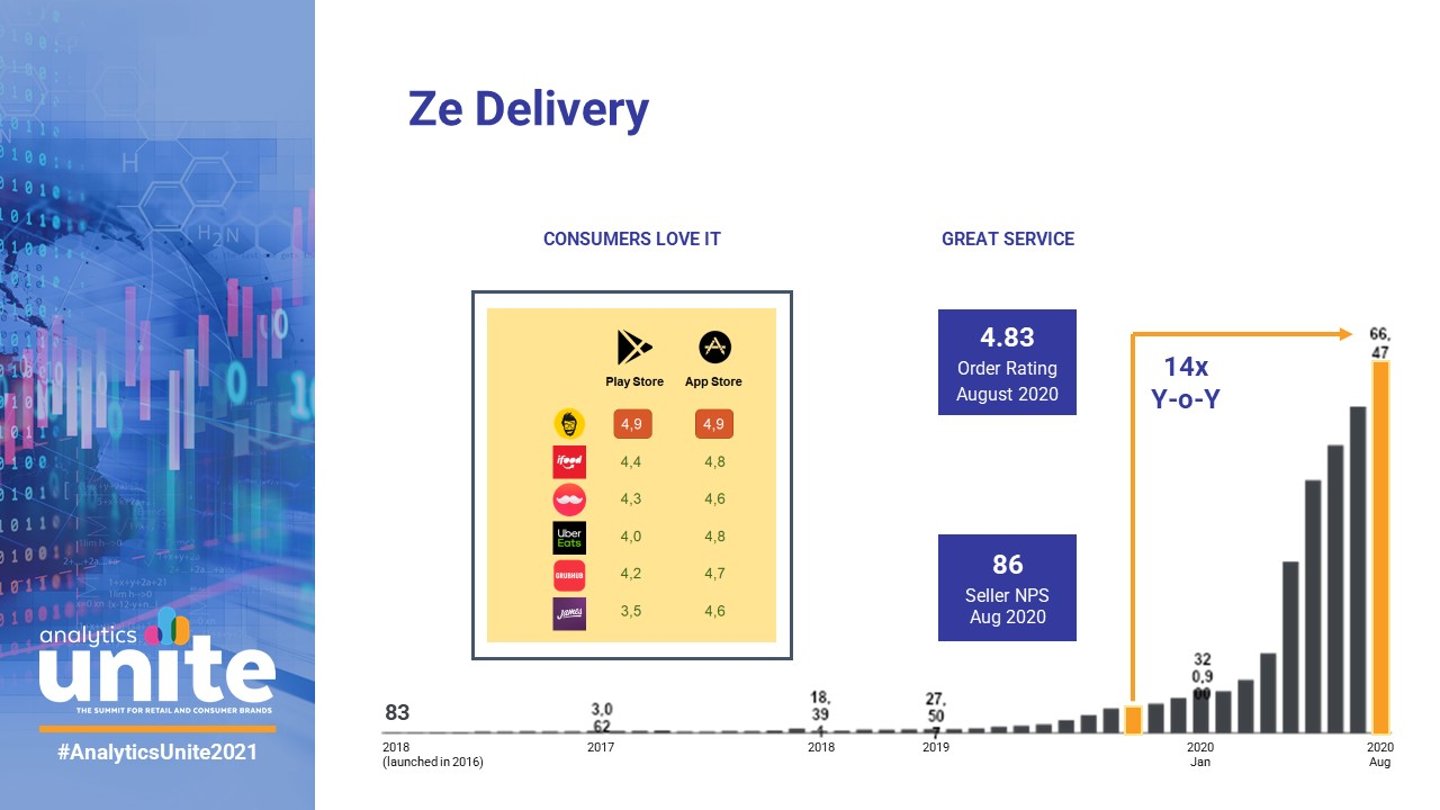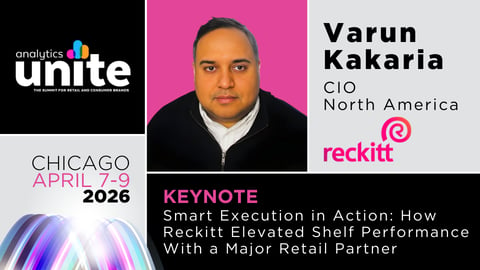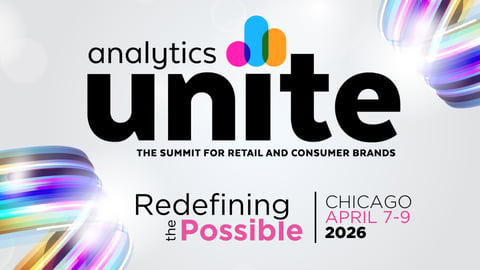How AB InBev’s Zé Delivery Hit 27 Million Orders in 2020
What do you do when demand for your product skyrockets beyond your wildest expectations? Scale, scale, scale.
In “Answering Demand: A Case Study in Growth,” a session at Analytics Unite this week, France Roy, AB InBev chief technology officer, direct-to-consumer (and CGT Visionary), shared a peek behind the curtain at Zé Delivery, the AB InBev subsidiary that delivers cold beer to consumers within an hour by leveraging its retail store network.
Based in Brazil, the service is part of AB InBev’s ZX Ventures incubator group, which has helped drive $1 billion in incremental revenue over the last five years, primarily through Zé and its retail locations. Demand skyrocketed when the pandemic forced retail closures, and Zé grew from delivering 1.6 million annual orders to more than 27 million in 2020.
Despite appearing to the contrary, “this wasn’t an overnight success,” Roy said, but rather took years of planning to build and optimize an ecosystem. As a result, the service skillfully maintained its high net promoter scores and Google and Apple App store ratings thanks to this groundwork.
For one thing, AB InBev had developed a series of tech and product squads focused on the end-to-end Zé experience — everything from onboarding new sellers; to consumers finding, selecting and paying for products; to managing fulfillment. Its business intelligence platform squads, meanwhile, ensured it tracked the right KPIs for both products and performance.
As popularity grew, new squads formed to address new needs. For example, a pandemic-related wrinkle became a new need for credit card payments for contactless delivery. This in turn brought fraud challenges, necessitating a squad dedicated to optimizing credit card fraud.
Instances such as these resulted in Zé growing from two squads to 30, with employees increasing from 60 to 300 in 2020.
Naturally, this resulted in a few growing pains. The company not only wanted to maintain the high bar set for new talent recruitment, but also ensure they’re effectively onboarded into a highly autonomous culture — both of which were unsurprisingly a challenge given such a dramatic hiring curve.
And so with hindsight being 20/20 — an in offering guidance to AU attendees — Roy’s look-back advice would have been to hire a bigger team ahead of the curve to alleviate the common issues accompanied by scaling: “How do you balance … keeping the engine that’s driving the business shiny vs. keeping the entire car moving forward.”
As with many CGs, last-mile costs remain a challenge in maintaining profitability, and so Zé has built dark stores in key locations to reduce reliance upon working with third parties. This in turn enabled it to boost service and lower costs, increasing profitability and scalability.
Zé is expanding to such countries as Brazil, Colombia and Mexico — the latter of which is the next biggest bet, Roy said, thanks to AB InBev’s existing retail footprint. And while it uses learnings from Brazil as it enters new regions, each market is treated as its own venture.
“Success is not guaranteed,” Roy noted. “We still need to test and learn, and see how it’s different from what we’ve learned.”






